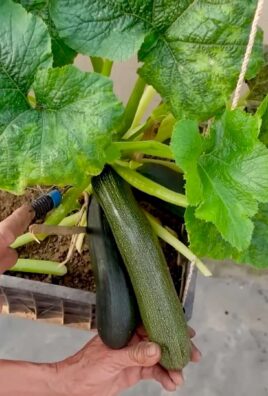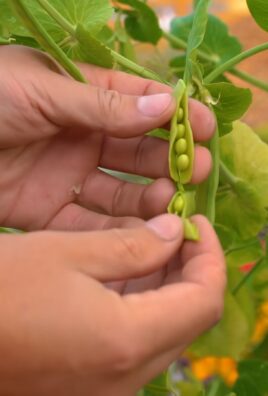Container strawberry yield – those three words hold the key to unlocking a summer filled with juicy, sun-ripened berries right on your patio! Imagine stepping outside and plucking a handful of sweet, fragrant strawberries, grown with your own two hands. No more trips to the grocery store for bland, overpriced berries. This is the dream, and it’s more attainable than you think!
Growing strawberries in containers isn’t a new fad. In fact, container gardening has been practiced for centuries, dating back to ancient civilizations who used pots and vessels to cultivate plants in limited spaces. Think of the Hanging Gardens of Babylon – a testament to the ingenuity of growing plants in unconventional ways! Today, this tradition continues, adapted for modern living and the desire for fresh, homegrown produce, even without a sprawling garden.
But let’s be honest, sometimes our container strawberry plants just don’t seem to produce as much as we’d hoped. That’s where this article comes in! I’m going to share some simple, yet incredibly effective, DIY tricks and hacks to dramatically boost your container strawberry yield. We’ll cover everything from soil amendments and watering techniques to clever pest control methods and even some DIY support structures to maximize sunlight exposure. These are the secrets I’ve learned over years of experimenting, and I’m excited to share them with you so you can enjoy a bountiful harvest of delicious strawberries all season long!

Maximize Your Strawberry Harvest: A DIY Container Gardening Guide
Hey there, fellow gardening enthusiasts! Are you dreaming of juicy, sun-ripened strawberries but short on space? Don’t worry, you can absolutely grow a bountiful strawberry harvest right in containers! I’ve been container gardening strawberries for years, and I’m excited to share my secrets to success with you. This guide will walk you through every step, from choosing the right container to ensuring a delicious and abundant yield.
Choosing the Right Container and Variety
Before we get our hands dirty, let’s talk about the foundation of our strawberry success: the container and the strawberry variety.
* Container Size Matters: Strawberries need room to spread their roots. I recommend using containers that are at least 12 inches in diameter and 8 inches deep. Larger is generally better, as it provides more space for root growth and helps retain moisture. Hanging baskets are also a fantastic option, especially for everbearing and day-neutral varieties.
* Drainage is Key: Strawberries hate soggy feet! Make sure your container has adequate drainage holes. If not, drill a few extra.
* Material Considerations: Plastic, terracotta, and even fabric pots all work well. Terracotta pots dry out faster, so you’ll need to water more frequently. Fabric pots offer excellent drainage and aeration.
* Choosing the Right Variety: This is crucial for a successful harvest! There are three main types of strawberries:
* June-Bearing: These produce one large crop of strawberries in the spring, usually around June (hence the name!). They’re great if you want a big batch for jam-making.
* Everbearing: These produce two to three smaller crops throughout the spring, summer, and fall. They’re perfect for a continuous supply of fresh berries.
* Day-Neutral: These produce strawberries continuously throughout the growing season, regardless of day length. They’re a great choice for consistent harvests.
I personally love everbearing varieties like “Seascape” and “Albion” for container gardening because they provide a steady stream of delicious berries all season long. “Ozark Beauty” is a popular June-bearing variety. Do some research and choose a variety that suits your climate and preferences.
Preparing Your Container and Planting
Now for the fun part – getting our hands dirty!
1. Gather Your Supplies: You’ll need:
* Your chosen container(s)
* High-quality potting mix (not garden soil!)
* Strawberry plants (either bare-root or established plants)
* Slow-release fertilizer (optional, but recommended)
* Watering can or hose
* Trowel or small shovel
2. Prepare the Container:
* If you’re using a new terracotta pot, soak it in water for a few hours before planting. This helps prevent it from drawing moisture away from the soil.
* Line the bottom of the container with a layer of landscape fabric or coffee filters to prevent soil from washing out through the drainage holes.
3. Fill with Potting Mix:
* Fill the container with high-quality potting mix, leaving about an inch or two of space at the top. Don’t use garden soil, as it’s too heavy and doesn’t drain well in containers. I like to use a mix specifically formulated for containers.
* If you’re using slow-release fertilizer, mix it into the potting mix according to the package directions.
4. Planting Your Strawberries:
* Bare-Root Plants: If you’re using bare-root plants, soak them in water for about 30 minutes before planting. This helps rehydrate them. Dig a small hole in the potting mix, making sure the crown of the plant (where the roots meet the stem) is level with the soil surface. Don’t bury the crown, as this can cause the plant to rot. Spread the roots out gently and cover them with potting mix.
* Established Plants: If you’re using established plants, gently remove them from their nursery pots. Loosen the roots slightly and plant them in the container at the same depth they were growing in the nursery pot.
5. Water Thoroughly:
* After planting, water the strawberries thoroughly until water drains out of the drainage holes. This helps settle the soil and encourages root growth.
Caring for Your Container Strawberries
Proper care is essential for a bountiful strawberry harvest. Here’s what you need to know:
* Sunlight: Strawberries need at least 6-8 hours of sunlight per day. Place your containers in a sunny location.
* Watering: Water regularly, especially during hot, dry weather. The soil should be consistently moist, but not soggy. Check the soil moisture by sticking your finger into the soil. If the top inch feels dry, it’s time to water. I usually water deeply every 2-3 days, depending on the weather.
* Fertilizing: Strawberries are heavy feeders. Fertilize them every 2-4 weeks with a balanced liquid fertilizer, following the package directions. You can also use a fertilizer specifically formulated for strawberries.
* Mulching: Mulch around the strawberry plants with straw, pine needles, or wood chips. This helps retain moisture, suppress weeds, and keep the berries clean.
* Pest and Disease Control: Keep an eye out for pests like aphids, spider mites, and slugs. You can control these pests with insecticidal soap, neem oil, or diatomaceous earth. Strawberries can also be susceptible to diseases like powdery mildew and gray mold. Ensure good air circulation around the plants and avoid overhead watering to prevent these diseases. Remove any infected leaves or berries promptly.
* Pruning: Remove any dead or yellowing leaves regularly. For everbearing and day-neutral varieties, pinch off the first flush of flowers in the spring. This encourages the plants to produce more runners and a larger crop later in the season.
* Runner Management: Strawberries produce runners, which are long stems that grow horizontally and develop new plantlets at the nodes. If you want to propagate new strawberry plants, you can allow the runners to root in small pots filled with potting mix. Otherwise, it’s best to prune off the runners to encourage the mother plant to focus its energy on producing berries.
* Winter Care: In colder climates, you’ll need to protect your container strawberries from freezing temperatures. You can move the containers to a sheltered location, such as a garage or shed, or wrap them in burlap or bubble wrap. Water sparingly during the winter months.
Harvesting Your Strawberries
The moment we’ve all been waiting for – harvesting those delicious strawberries!
* When to Harvest: Strawberries are ready to harvest when they are fully red, plump, and slightly soft to the touch. They should also detach easily from the stem.
* How to Harvest: Gently grasp the strawberry near the stem and twist or snip it off. Avoid pulling on the berry, as this can damage the plant.
* Enjoy Your Harvest: Eat your strawberries fresh, use them in desserts, make jam, or freeze them for later.
Troubleshooting Common Problems
Even with the best care, you might encounter some challenges along the way. Here are some common problems and how to address them:
* Lack of Berries: If your strawberry plants aren’t producing berries, it could be due to a lack of sunlight, insufficient watering, or poor pollination. Make sure your plants are getting enough sunlight and water, and consider hand-pollinating the flowers with a small paintbrush.
* Small Berries: Small berries can be caused by a lack of nutrients or water. Fertilize your plants regularly and water them deeply.
* Pest Infestations: As mentioned earlier, keep an eye out for pests and treat them promptly.
* Diseases: Ensure good air circulation and avoid overhead watering to prevent diseases. Remove any infected leaves or berries.
* Birds Eating Your Berries: Birds love strawberries just as much as we do! Protect your berries with netting or bird repellent.
Propagating New Strawberry Plants
One of the great things about strawberries is that they’re easy to propagate from runners. Here’s how:
1. Allow Runners to Develop: Let the runners grow from your strawberry plants.
2. Root the Runners: Place small pots filled with potting mix near the mother plant. Pin the runners to the soil in the pots using hairpins or small rocks.
3. Water Regularly: Keep the soil in the pots consistently moist.
4. Sever the Runners: Once the runners have developed roots, sever them from the mother plant.
5. Transplant: Transplant the new strawberry plants to their own containers or garden beds.
Extra Tips for a Bumper Crop
Here are a few extra tips to help you maximize your strawberry harvest:
* Rotate Your Crops: Don’t plant strawberries in the same container year after year.

Conclusion
So, there you have it! Transforming your strawberry yield in containers isn’t just a pipe dream; it’s an achievable reality with a few simple, yet impactful, tweaks. We’ve explored how optimizing sunlight, soil composition, watering techniques, and even companion planting can dramatically increase the number of juicy, red berries you harvest from your container garden.
But why is this DIY approach a must-try? Beyond the obvious benefit of a larger strawberry harvest, it’s about taking control of your food source, connecting with nature, and experiencing the satisfaction of nurturing something from a tiny plant to a bountiful producer. Store-bought strawberries, while convenient, often lack the intense flavor and sweetness of homegrown varieties. Plus, you have complete control over the growing process, ensuring your berries are free from harmful pesticides and chemicals.
This isn’t a one-size-fits-all solution, though. Feel free to experiment! Try different container sizes to see what works best for your space. Explore various strawberry varieties known for their high yields in container settings, such as Albion, Seascape, or Ozark Beauty. Consider adding a slow-release fertilizer specifically formulated for berries to provide a consistent nutrient supply. You can even get creative with your container design, using hanging baskets or tiered planters to maximize space and create a visually stunning strawberry display.
Don’t be afraid to get your hands dirty and embrace the learning process. Gardening is all about experimentation and adapting to your specific environment. Observe your plants closely, pay attention to their needs, and adjust your approach accordingly. You might discover a unique combination of techniques that works wonders for your container strawberry yield.
And remember, the journey doesn’t end with the harvest. Share your experiences! Let us know what worked for you, what challenges you faced, and any innovative solutions you discovered along the way. Your insights can help other gardeners achieve their strawberry-growing goals and contribute to a thriving community of container gardening enthusiasts. Post pictures of your bountiful harvests, share your favorite strawberry recipes, and inspire others to embark on their own strawberry-growing adventures.
Ultimately, boosting your container strawberry yield is about more than just growing more berries; it’s about cultivating a deeper connection with nature, fostering a sense of accomplishment, and enjoying the unparalleled taste of homegrown goodness. So, grab your gardening gloves, gather your supplies, and get ready to transform your container garden into a strawberry paradise! We’re confident that with a little effort and these proven techniques, you’ll be enjoying a delicious and abundant harvest in no time. Happy growing!
Frequently Asked Questions (FAQ)
Q: What is the best type of container for growing strawberries?
A: The best type of container for growing strawberries is one that is at least 12 inches deep and wide. This allows ample room for the roots to grow and spread. Hanging baskets, window boxes, and even repurposed buckets can work well, as long as they have adequate drainage holes. Consider using terracotta pots, as they allow for better airflow and prevent the soil from becoming waterlogged. Strawberry pots, specifically designed with multiple openings, are also a popular choice for maximizing space and creating a visually appealing display. Remember to choose a container made from a material that won’t leach harmful chemicals into the soil.
Q: How often should I water my container strawberries?
A: Watering frequency depends on several factors, including the weather, the type of container, and the soil composition. Generally, you should water your container strawberries when the top inch of soil feels dry to the touch. During hot, sunny weather, you may need to water them daily, or even twice a day. Avoid overwatering, as this can lead to root rot. Ensure that your container has adequate drainage to prevent water from pooling at the bottom. A good rule of thumb is to water deeply and thoroughly, allowing the excess water to drain out of the drainage holes. Monitor your plants closely and adjust your watering schedule as needed.
Q: What kind of soil is best for container strawberries?
A: Strawberries thrive in well-draining, slightly acidic soil with a pH between 5.5 and 6.5. A good potting mix specifically formulated for fruits and vegetables is ideal. You can also create your own mix by combining equal parts of potting soil, compost, and perlite or vermiculite. Compost provides essential nutrients and improves soil structure, while perlite or vermiculite enhances drainage and aeration. Avoid using garden soil in containers, as it can become compacted and hinder root growth. Consider adding a slow-release fertilizer to the soil mix to provide a consistent supply of nutrients throughout the growing season.
Q: How much sunlight do container strawberries need?
A: Strawberries need at least 6-8 hours of direct sunlight per day to produce a bountiful harvest. Choose a location for your containers that receives ample sunlight throughout the day. If you live in a particularly hot climate, providing some afternoon shade can help prevent the plants from overheating. Insufficient sunlight can result in smaller berries and a reduced yield. Observe your plants closely and adjust their location as needed to ensure they are receiving adequate sunlight.
Q: What are some common pests and diseases that affect container strawberries, and how can I prevent them?
A: Common pests that affect container strawberries include aphids, spider mites, and slugs. Diseases include gray mold (Botrytis) and leaf spot. To prevent these problems, inspect your plants regularly for signs of infestation or disease. Remove any infected leaves or berries promptly. Encourage beneficial insects, such as ladybugs, which prey on aphids and other pests. Use organic pest control methods, such as insecticidal soap or neem oil, if necessary. Ensure good air circulation around your plants to prevent fungal diseases. Avoid overwatering and remove any dead or decaying plant matter from the container.
Q: Can I grow strawberries in containers indoors?
A: Yes, you can grow strawberries in containers indoors, but it requires providing them with adequate light. You’ll need a strong grow light that mimics sunlight to ensure they receive the necessary energy for photosynthesis. Place the grow light about 6-12 inches above the plants and keep it on for 12-14 hours per day. You’ll also need to ensure proper ventilation and humidity levels. Hand-pollinating the flowers may be necessary to encourage fruit production. While growing strawberries indoors can be challenging, it’s a rewarding experience that allows you to enjoy fresh berries year-round.
Q: What are some good companion plants for container strawberries?
A: Several plants can benefit strawberries when grown together in containers. Marigolds deter nematodes and other pests. Basil repels aphids and whiteflies. Borage attracts beneficial insects and improves pollination. Thyme repels cabbage moths and other pests. Avoid planting strawberries near members of the cabbage family, such as broccoli and cauliflower, as they can compete for nutrients. Companion planting can help create a healthier and more productive container garden.
Q: How do I overwinter my container strawberries?
A: Overwintering container strawberries depends on your climate. In mild climates, you can simply leave the containers outdoors, but you may want to protect them from frost by covering them with burlap or moving them to a sheltered location. In colder climates, you’ll need to move the containers to an unheated garage or shed. Water them sparingly throughout the winter to prevent the soil from drying out completely. In early spring, gradually acclimate the plants to outdoor conditions before moving them back to their sunny location.
Q: How do I increase my container strawberry yield?
A: Increasing your container strawberry yield involves a combination of factors. Ensure your plants receive adequate sunlight, water, and nutrients. Choose a well-draining soil mix and a container that is large enough to accommodate the roots. Prune away any runners that develop to encourage the plant to focus its energy on fruit production. Hand-pollinate the flowers if necessary. Protect your plants from pests and diseases. By following these tips, you can significantly increase your container strawberry yield and enjoy a bountiful harvest.




Leave a Comment